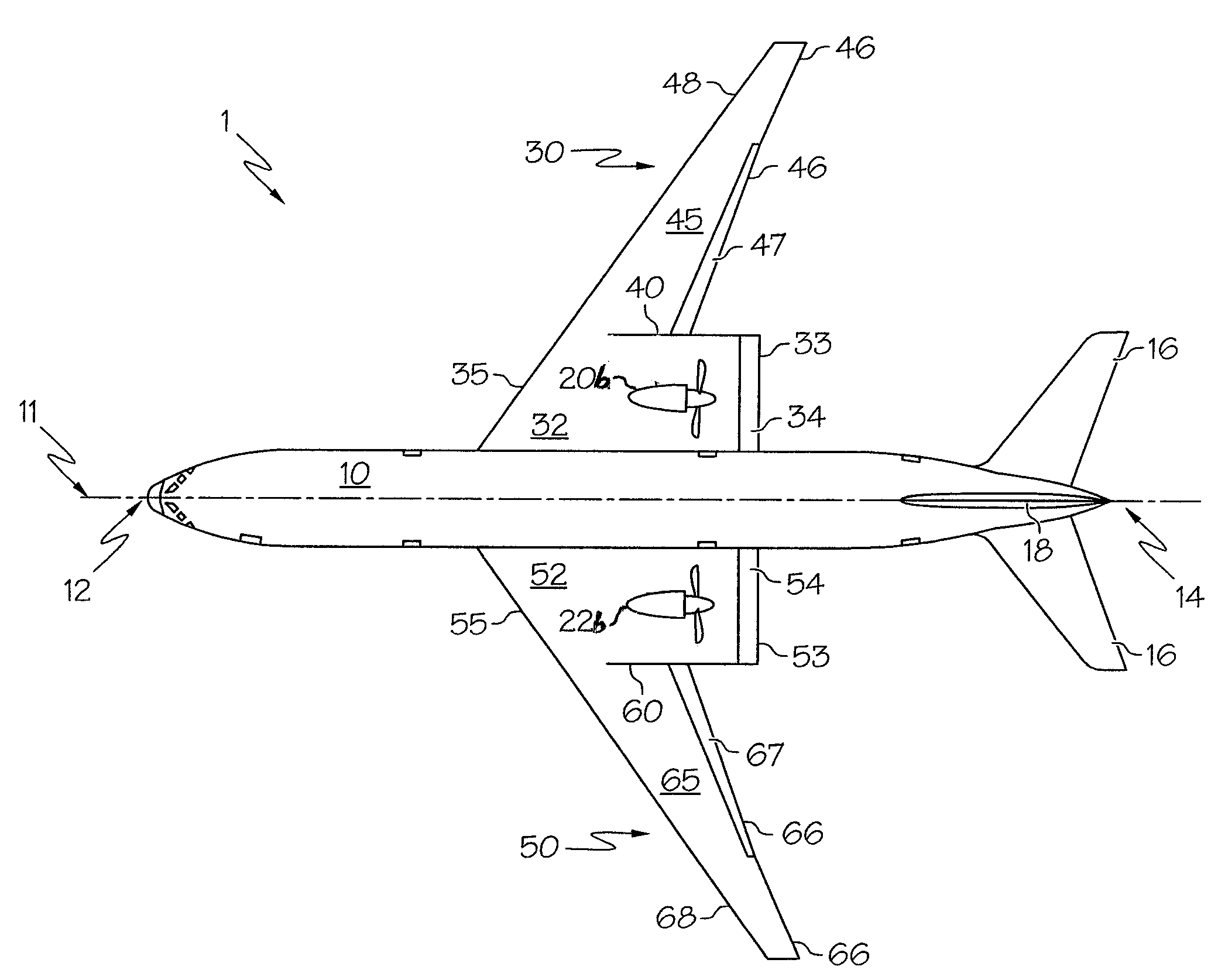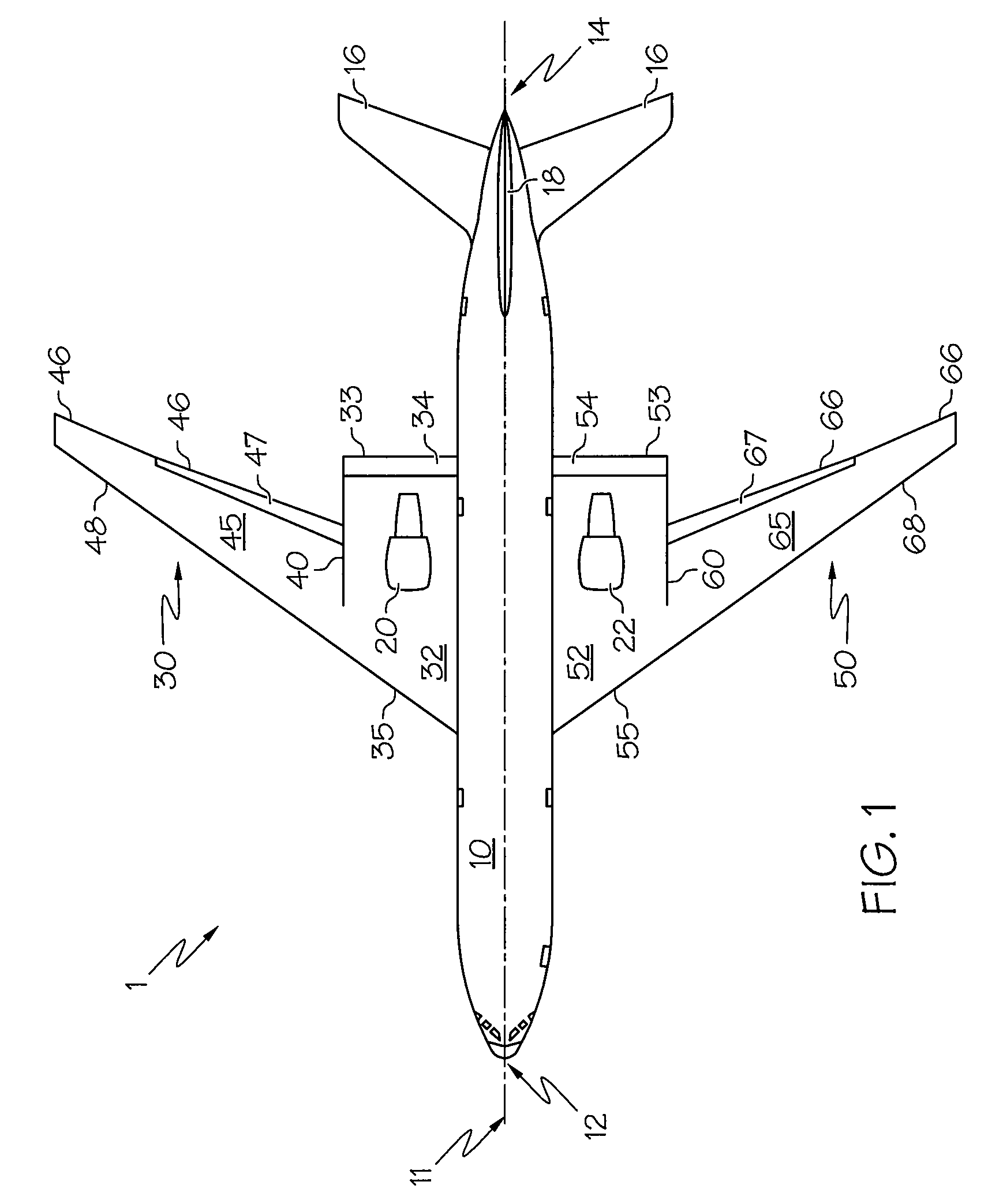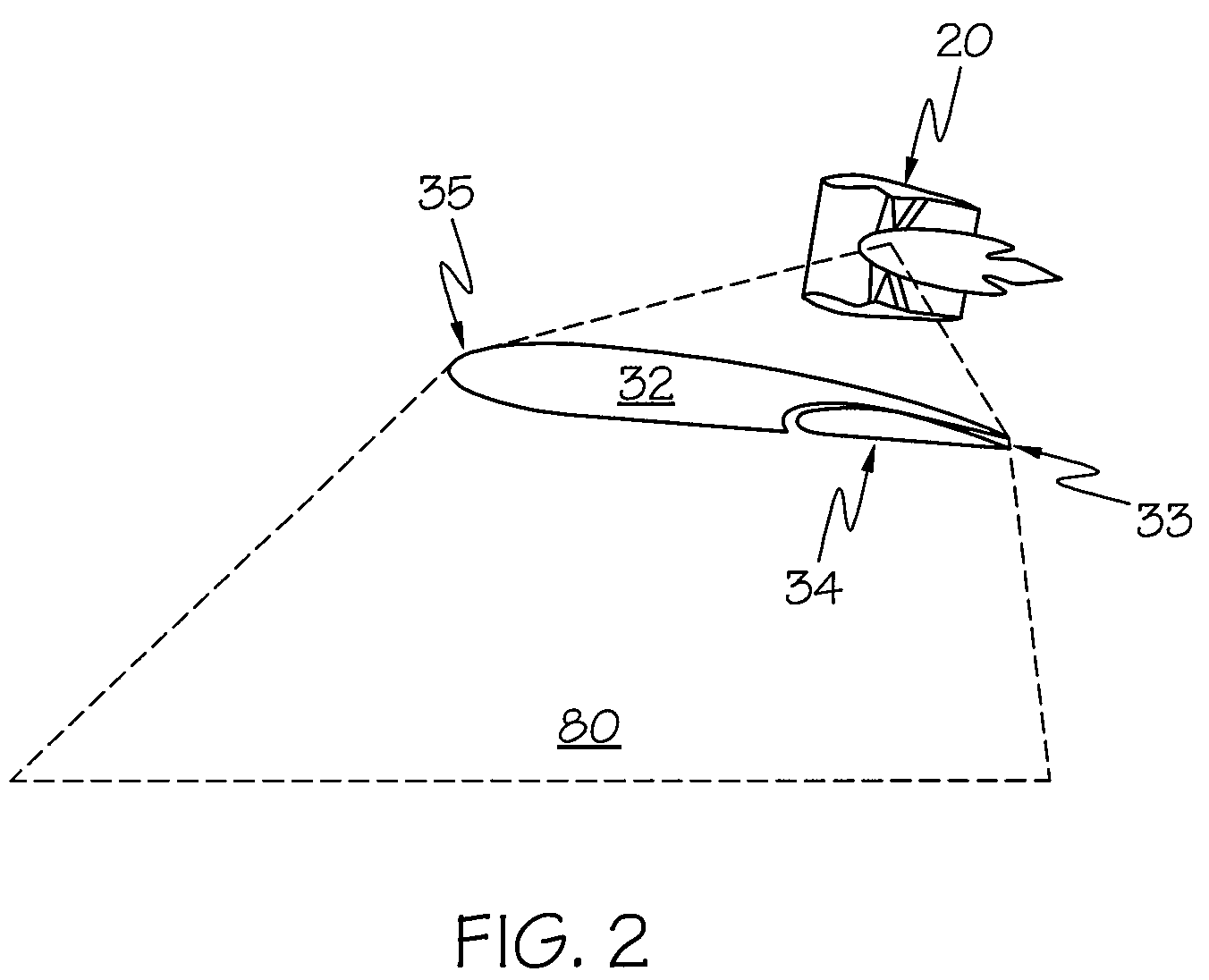Noise-shielding wing configuration
a technology of noise shielding and wing configuration, which is applied in the direction of power plant exhaust arrangement, airflow influencers, transportation and packaging, etc., can solve the problems of reducing the overall noise heard below the aircraft, generating significant noise from the engine during operation, and general undesirable excessive engine sound, etc., to achieve good spanwise lift distribution, increase engine noise shielding, and improve structural integration
- Summary
- Abstract
- Description
- Claims
- Application Information
AI Technical Summary
Benefits of technology
Problems solved by technology
Method used
Image
Examples
Embodiment Construction
Embodiments of the present invention now will be described more fully hereinafter with reference to the accompanying drawings, in which some, but not all, embodiments of the invention are shown. Indeed, the invention may be embodied in many different forms and should not be construed as limited to the embodiments set forth herein; rather, these embodiments are provided so that this disclosure will satisfy applicable legal requirements. Like numbers refer to like elements throughout.
Referring to the drawings, FIG. 1 illustrates a top plan view of an aircraft 1 configured in accordance with an exemplary embodiment of the present invention. Although FIG. 1 illustrates an aircraft 1 having a low-wing configuration, other embodiments of the present invention may be configured with a high-wing, shoulder-wing, or mid-wing configuration as illustrated, for example, in other figures described herein. Similarly, although the figures illustrated herein generally depict swept and tapered wings,...
PUM
 Login to View More
Login to View More Abstract
Description
Claims
Application Information
 Login to View More
Login to View More - R&D
- Intellectual Property
- Life Sciences
- Materials
- Tech Scout
- Unparalleled Data Quality
- Higher Quality Content
- 60% Fewer Hallucinations
Browse by: Latest US Patents, China's latest patents, Technical Efficacy Thesaurus, Application Domain, Technology Topic, Popular Technical Reports.
© 2025 PatSnap. All rights reserved.Legal|Privacy policy|Modern Slavery Act Transparency Statement|Sitemap|About US| Contact US: help@patsnap.com



